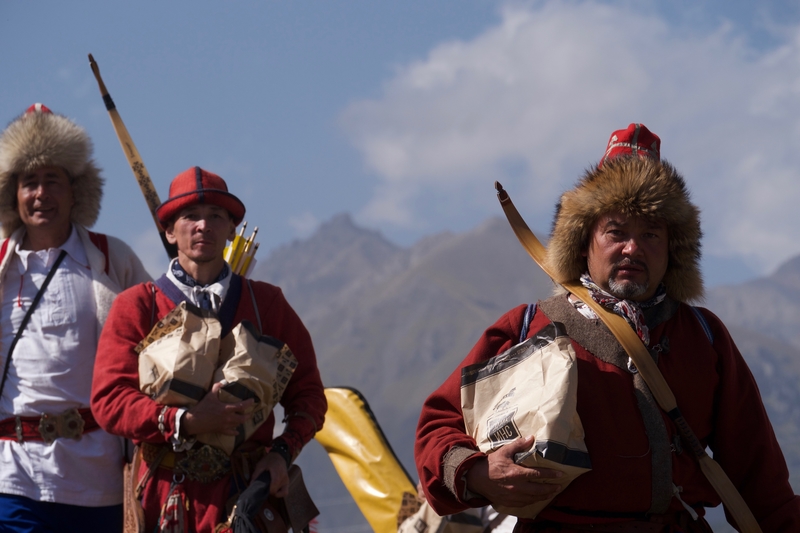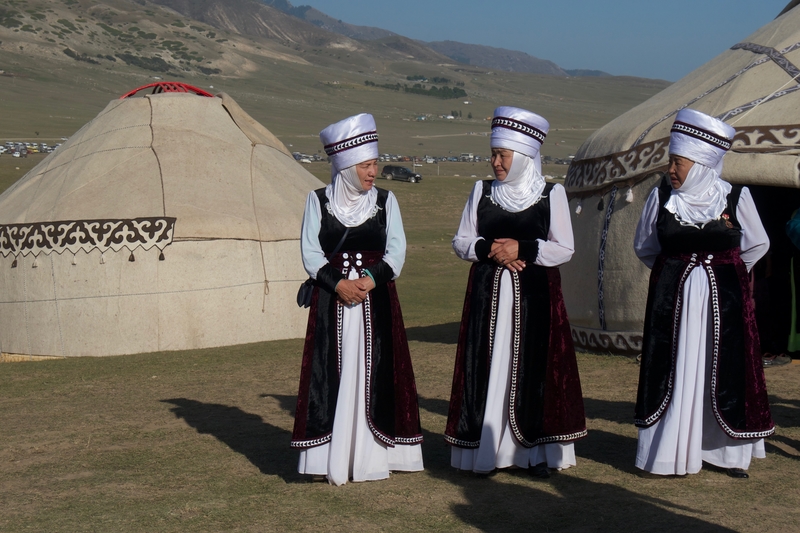
The World Nomad Games: A Celebration of Nomadic Life
The World Nomad Games is an event unlike any other. Sometimes referred to as the ‘Olympics of the Nomads,’ the week-long celebration of Central Asian athletics is a stunning display of epic proportions.
Since its inception in 2014, the popularity of the nomadic competition has soared. After all, where else can you see such a dizzying array of people from countries whose names you can’t even pronounce? Or watch men on horseback sling headless goat carcasses into hoops? Or cheer on Team USA as it tries to compete with falconers and horseback wrestlers who have perfected their sport for millennia?
THE THIRD BIENNIAL WORLD NOMAD GAMES
Kyrgyzstan launched the inaugural World Nomad Games in 2014. The purpose of the games was to showcase Kyrgyzstan’s tourism potential to audiences abroad, while instilling a sense of pride in local communities who have struggled to define themselves in the wake of Soviet occupation. By hosting an event that would bring people together for a week of athletic competitions, dance performances, singing and craftsmanship, the organizers hoped to keep the nomadic traditions of Central Asia alive
And since its inception, the World Nomad Games has been a huge success. In 2014, the event attracted 600 athletes from 19 countries. Four years later, the third edition of the biennial event showcased nearly 2,000 competitors from 74 countries.
TRAVELING TO THE WORLD NOMAD GAMES
When I first heard about the World Nomad Games in 2016, I knew that I would have to travel to Kyrgyzstan for the 2018 competition. The event simply sounded too spectacular to pass up. Without even considering the rugged beauty of nearby Lake Issyk Kul or the endless trekking opportunities in the Tian Shan Mountains, the World Nomad Games catapulted Kyrgyzstan to the top of my travel wish-list.
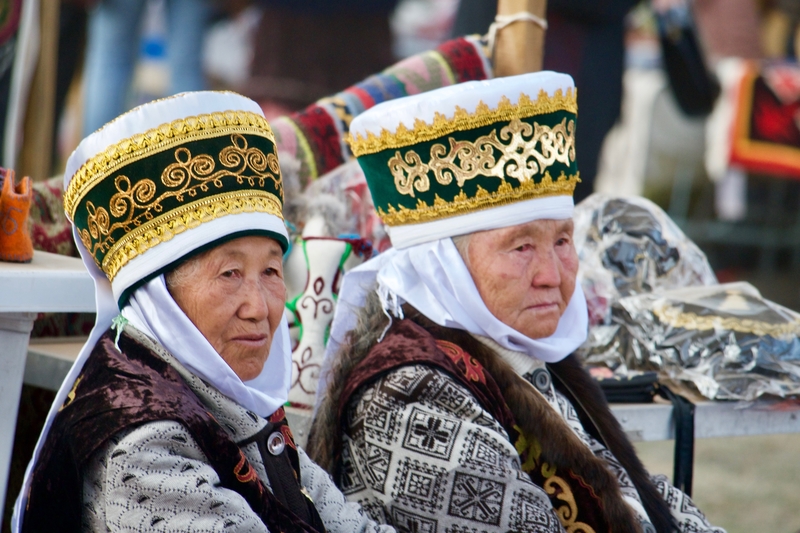
Dan, Courtney and I traveled to the third biennial World Nomad Games in Cholpon Ata, after four incredible days exploring the deserts and lakes of southern Kazakhstan.
To reach the event from Almaty, we took a minibus via the Kyrgyz capital of Bishkek. Fourteen hours later, we arrived in Cholpon Ata physically exhausted, yet brimming with anticipation.
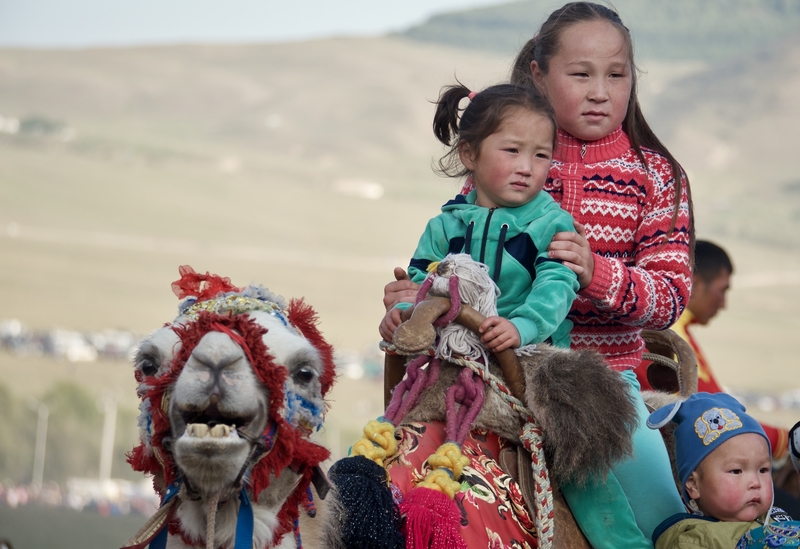
Prior to arriving in Kyrgyzstan, I stalked forums and websites online in order to find more information on the World Nomad Games. I was hooked. Yet, information on the sporting competition–even on the event’s own website–was scarce. It was not until mid-July, that I could confirm the event would be held in Cholpon Ata between September 2nd and September 8th.
By the time I arrived in Kyrgyzstan for the start of the games, I’d spent so much time searching for photos and descriptions online, that I began to worry that I’d overhyped the event in my head.
I figured the World Nomad Games could be one of two things: it could be as amazing as everyone promised, or it could be an inauthentic, touristy Disneyland of sorts.
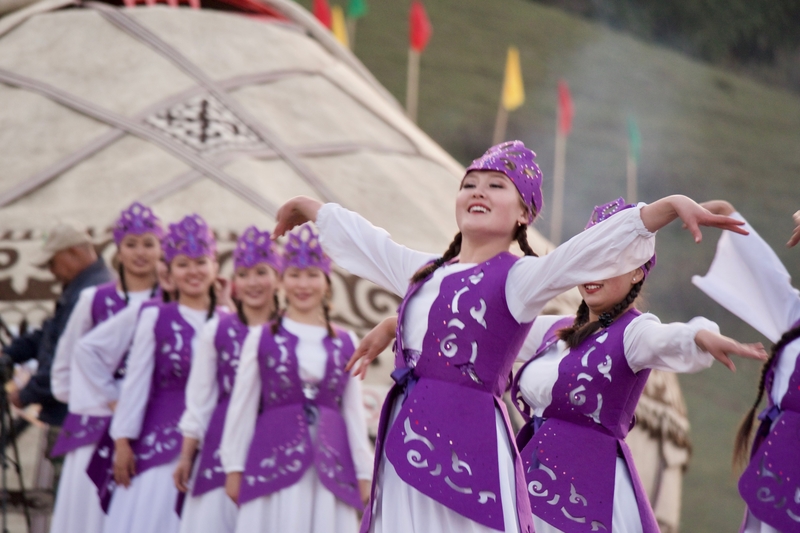
We stayed in Cholpon Ata for three days during the World Nomad Games. While there, we divided our time between the hippodrome in Cholpon Ata and the sweeping jailoo of the Kyrchyn Gorge.
I immediately realized that my fears of inauthenticity and Disney-style displays were unfounded. What I encountered during our three days at the World Nomad Games, was a dazzling display of Olympic-style showmanship, with a Kyrgyz twist.
I need not have worried about the authenticity of the games; the event was nothing short of spectacular.
EVENTS AT THE KYRCHYN GORGE JAILOO
During the World Nomad Games, the Kyrchyn Gorge Jailoo northeast of Cholpon-Ata transformed into a nomadic encampment of epic proportions. A jailoo, which translates to ‘summer pasture,’ is a place where nomads bring their flocks to graze during warmer months. During the games, the jailoo at Kyrchyn became home to hundreds of yurts, many of them exquisitely decorated.
As we meandered between the yurt camp, we stopped to admire acrobats, musicians and dancers. Locals–often decked out from head to toe in traditional dress–milled about with tourists. Their enthusiasm for the event was palpable, as they broke out into song, photographed themselves riding camels and cheered on their favorite athletes.
Various stages around the jailoo hosted live performances, meaning that entertainment abounded at all hours of the day. Competing athletes clopped by on horseback, interacting with visitors. Tightrope walkers and magicians performed their skills for gaping observers. Music notes floated into the crisp mountain air.
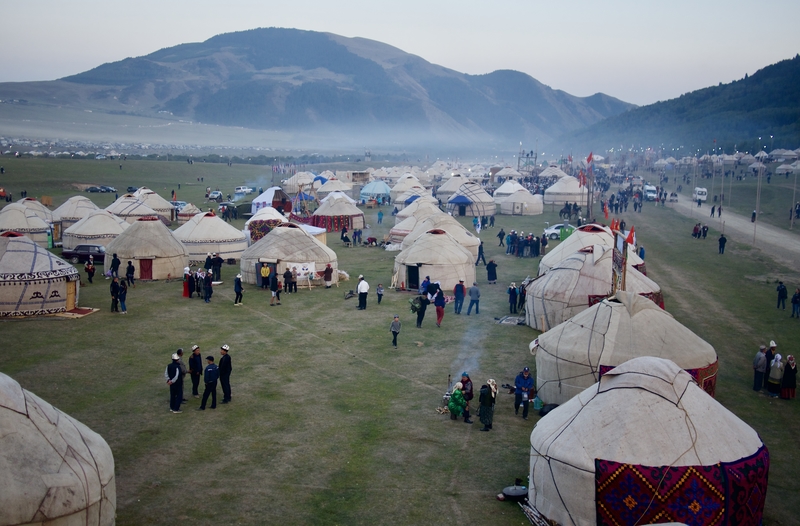
Aside from its exhibits of Kyrgyz music and art, the jailoo at the Kyrchyn Gorge was one of the main places where competitions occurred. Horseback archery, falconry, dog hunting and ordo—a bocce-like game that consists of dislodging sheep bones from a circle—took place at the edge of a grassy knoll, near the cultural village.
The Kyrchyn Gorge blew our expectations out of the water. With its theatrical performances, sporting events and decorated yurts, the jailoo evoked a nomadic encampment from a bygone era.
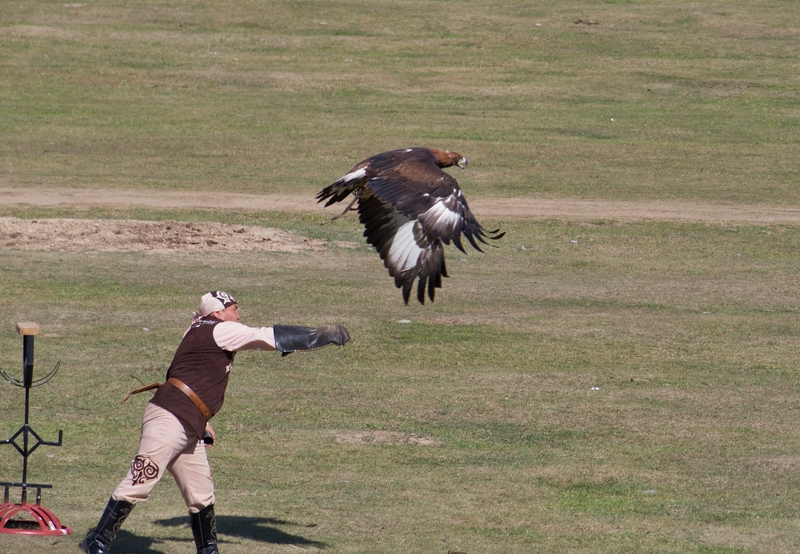
Considering the World Nomad Games was free to attend, I often found myself wondering how the event managed to remain so undiscovered.
And then I remembered we were in Kyrgyzstan–a country that most people from North America and Europe have likely never even heard of.
How lucky we were, to attend the World Nomad Games before it became flooded with kitschy souvenirs and busloads of tour groups.
WORLD NOMAD GAMES HIPPODROME EVENTS
While the Kyrchyn Gorge Jailoo hosted some of the most fascinating Kyrgyz sports competitions, many of the high-profile events at the World Nomad Games took place at the hippodrome in Cholpon Ata. Beautifully positioned at the edge of Lake Issyk Kul, the hippodrome hosted competitions of horseback wrestling, horse racing and kok boru.
Horseback wrestling, or ‘Er Enish‘ is perhaps the most brutal of all events at the games. A violent show of brute strength, the sport consists of bare-chested men attempting to fling each other off their horses and into the dirt.
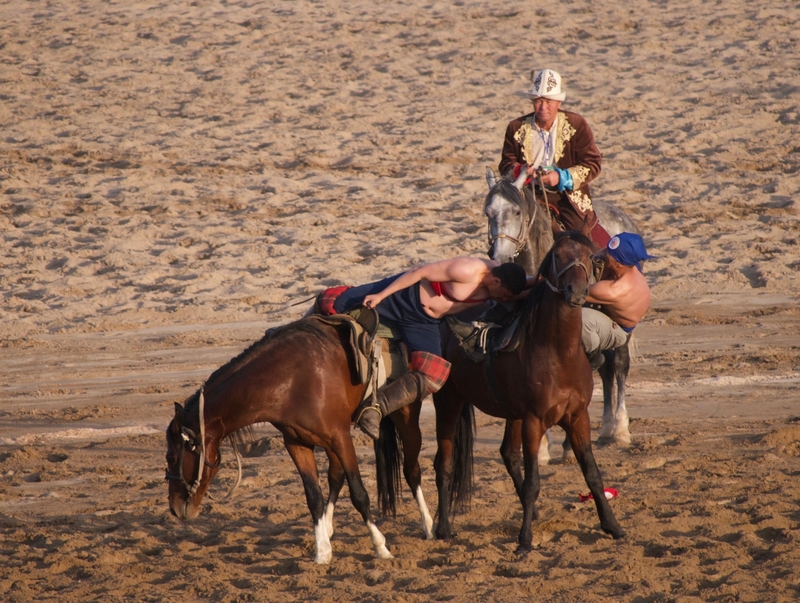
Er Enish drew sizable crowds to the hippodrome stadium. It was a clear favorite among locals and tourists alike. But while Er Enish competitions filled the grandstands, kok boru was the undeniable highlight of the at the World Nomad Games.
Kok boru is a traditional game in which two teams on horseback compete to rack up points. The game–like a form of rugby on horseback–consists of players slinging around a beheaded goat, in an attempt to fling it into large circular rings.
To those who don’t understand the sport, kok boru looks like pure chaos. Horses charge at each other from every direction, protesting and neighing and sending flying dust into the air. It is the type of sport that causes Western tourists to gape, and animal-lovers to cringe.
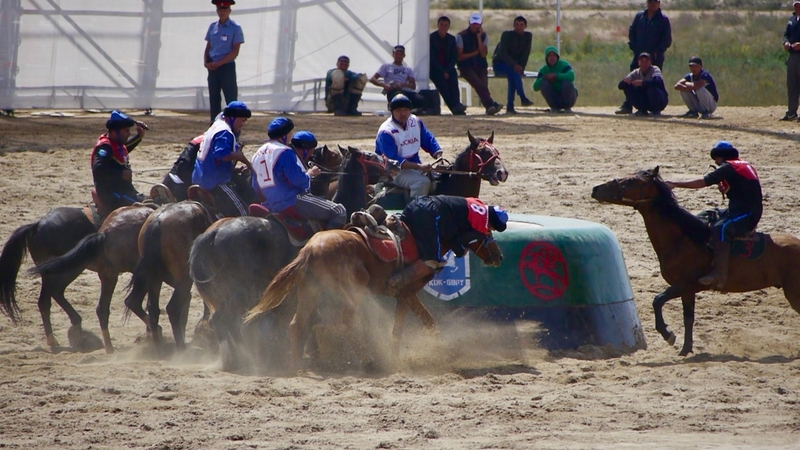
Kok boru is the hallmark event of the World Nomad Games, so we made sure to watch a few matches from the grandstands at the hippodrome. We even got to cheer on Team USA as it got clobbered (both literally and figuratively) by its Central Asian opponents. Unsurprisingly, the Wyoming cowboys from Team USA lost by nearly 30 points in each of the matches we attended. Nevertheless, it was a fun surprise to see my home country compete in an event that most of my fellow Americans are unaware exists.
****
Attending the World Nomad Games was one of the undeniable travel highlights of my life. And I don’t say that lightly. In a world that often focuses on cultural divisions and extremism within Islam, Kyrgyzstan’s celebration of nomadic life highlighted the commonalities that bring people together in both Central Asia and the world at large. The weeklong celebration of nomadic culture allowed me—a tourist—to have multiple meaningful connections with competitors, artists, musicians and dancers from Central Asia.
At Kyrgyzstan’s World Nomad Games, the line between tourist and local blurred as we danced together, laughed together and, together, cheered on those who were competing in the nomadic games.
I could have so easily imagined everything being different. I could have easily imagined the event charging steep entrance fees to attract tourist dollars and ward off local visitors. I could have easily imagined touts asking for money, or vendors hassling tourists to buy cheap nicknacks and souvenirs.
But what we encountered instead, was an event that was as genuine and inclusive as it was captivating. One in which everyone—locals and tourists alike—reveled in the festive atmosphere and came together in celebration of nomadic life.
In 2021, the World Nomad Games will take place in Turkey for the first time (delayed by a year because of the pandemic). With the additional tourism and press coverage that will undoubtedly follow, I just hope that the world’s largest nomadic sporting event can manage to maintain its authenticity.



